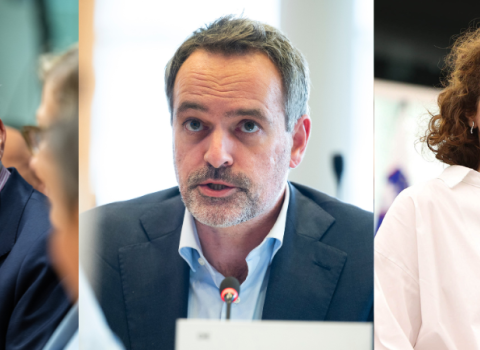The European Commission received a deluge of 45,000 applications in the 14 months to the end of February for Horizon 2020 grants.
“We are off to a great start,” said Carlos Moedas, the EU’s Commissioner for Research, disclosing the figure in an interview with Science|Business.
The barrage of applications is both good and bad. “It’s good because we’re going to get the best of the best,” Moedas said. However, he added, “We’ll really have a problem with the success rate.”
The success rate, a closely watched indicator of how well scientists are doing in the struggle for funds, is as low as 14 and 15 per cent on average.
In comparison, the success rate of those applying for European Research Council grants, considered among the hardest in the world for researchers to secure, was 10 per cent in 2013. For Horizon 2020’s predecessor, Framework Programme 7, success rates were around 19 to 22 per cent.
Moedas was speaking of average success rates across the first year of operation of Horizon 2020.
Commission officials have attributed the surge in applications to pent-up demand following the finishing of the last research programme cycle. Another possible explanation is a shortage of funding in member states, especially in Spain and Italy, where researchers have been hit by cuts in public funding.
Officials also point to a wide variation in success rates with some elements of Horizon 2020 recording funding rates of 30 per cent or more.
The Commission has spent the past few months studying the numbers, and considering specific remedies.Moedas acknowledged that low success rates are a concern, not least because of the time and money people invest in applying. “Of course we have to look at it,” he said.
However, it is too early to consider making detailed changes to the programme. Instead, Moedas is investigating ways of managing demand.
One option might be giving a yes or no at an earlier stage in the review process, so applicants waste less time on applications that are unlikely to succeed, the Commissioner said.
Parts of Horizon 2020, including a number of the main collaborative research calls, already have this two-step process. The first step, a simple application of 10 or so pages, gets a fairly rapid thumbs up or down. Those that clear the first phase then complete a more detailed application.
Another idea under discussion is to refer promising projects that have not made the grade in Horizon 2020, to compete for money from the EU’s regional programme or the new bumper investment plan announced by Jean-Claude Juncker, Commission President.
Some are concerned that industrial partners will baulk at 14-15 per cent figures and decide not to apply, but Moedas says low success rates should not deter anyone.
Despite the high number of applicants clamouring for money, businesses have not backed off, with the private sector accounting for just over a third of all applicants so far.
“[Industry] agrees it’s simpler, less bureaucratic [than previous programmes],” Moedas noted. The creation of the SME Instrument, which provides a ring fenced pot of money for small companies, is a big draw, he said.
Horizon 2020 is making fewer calls than previous research programmes, with the aim of clustering excellence in fewer areas. As a result, competition for EU funding was bound to increase, though the number of applications has exceeded expectations even so.
The most over-subscribed areas include health, nanotechnologies, ICT and security.





 A unique international forum for public research organisations and companies to connect their external engagement with strategic interests around their R&D system.
A unique international forum for public research organisations and companies to connect their external engagement with strategic interests around their R&D system.